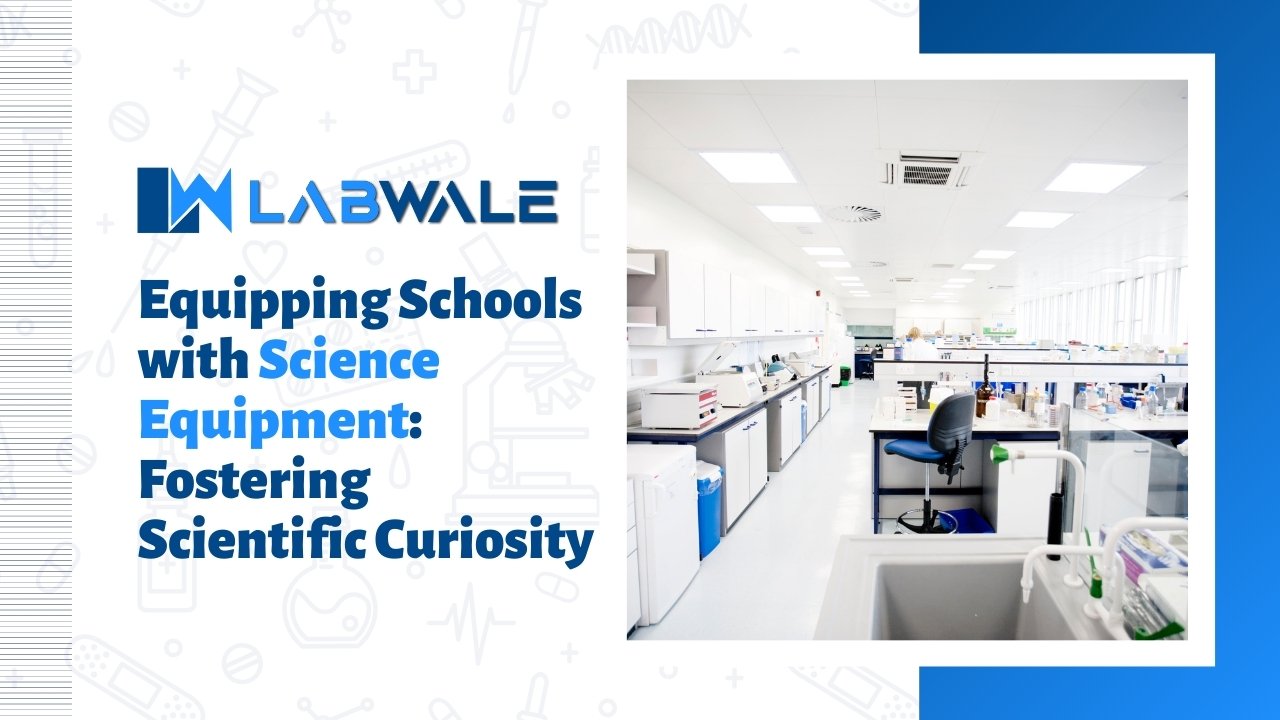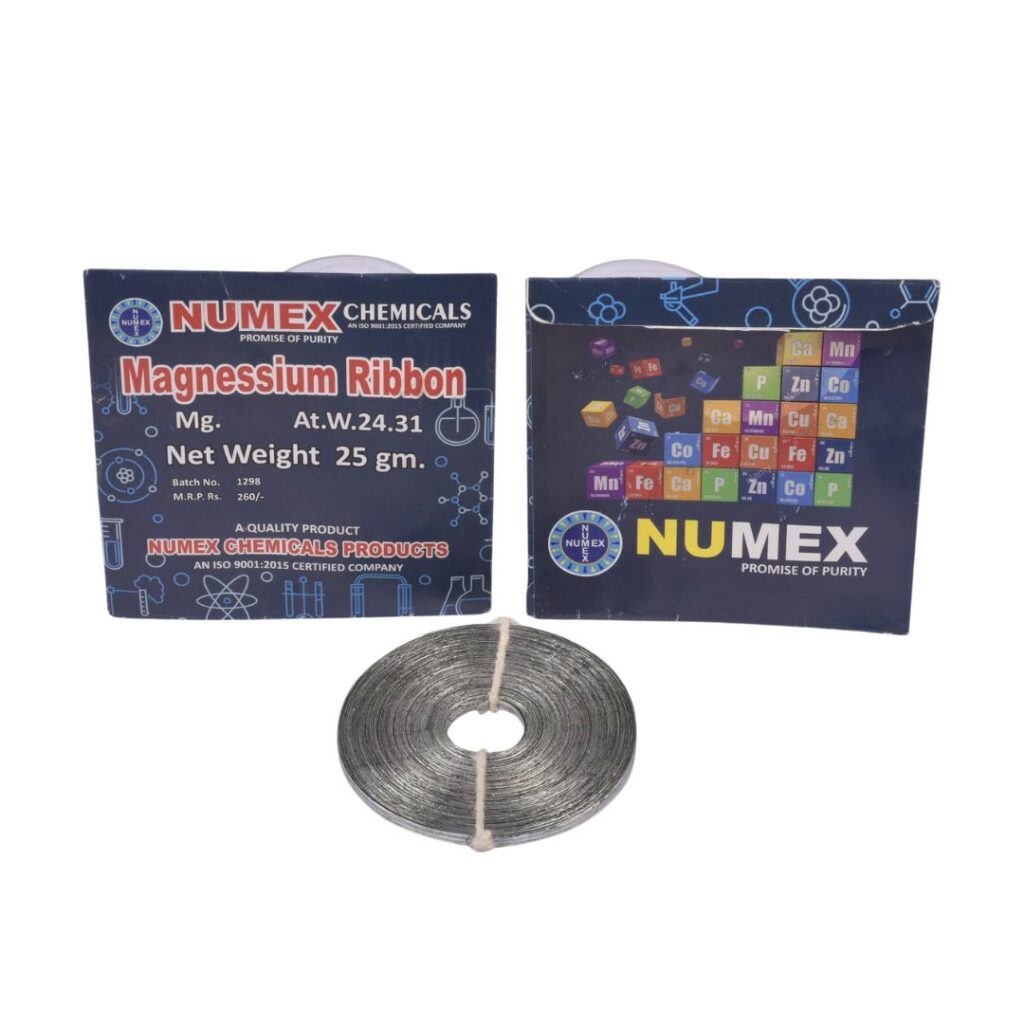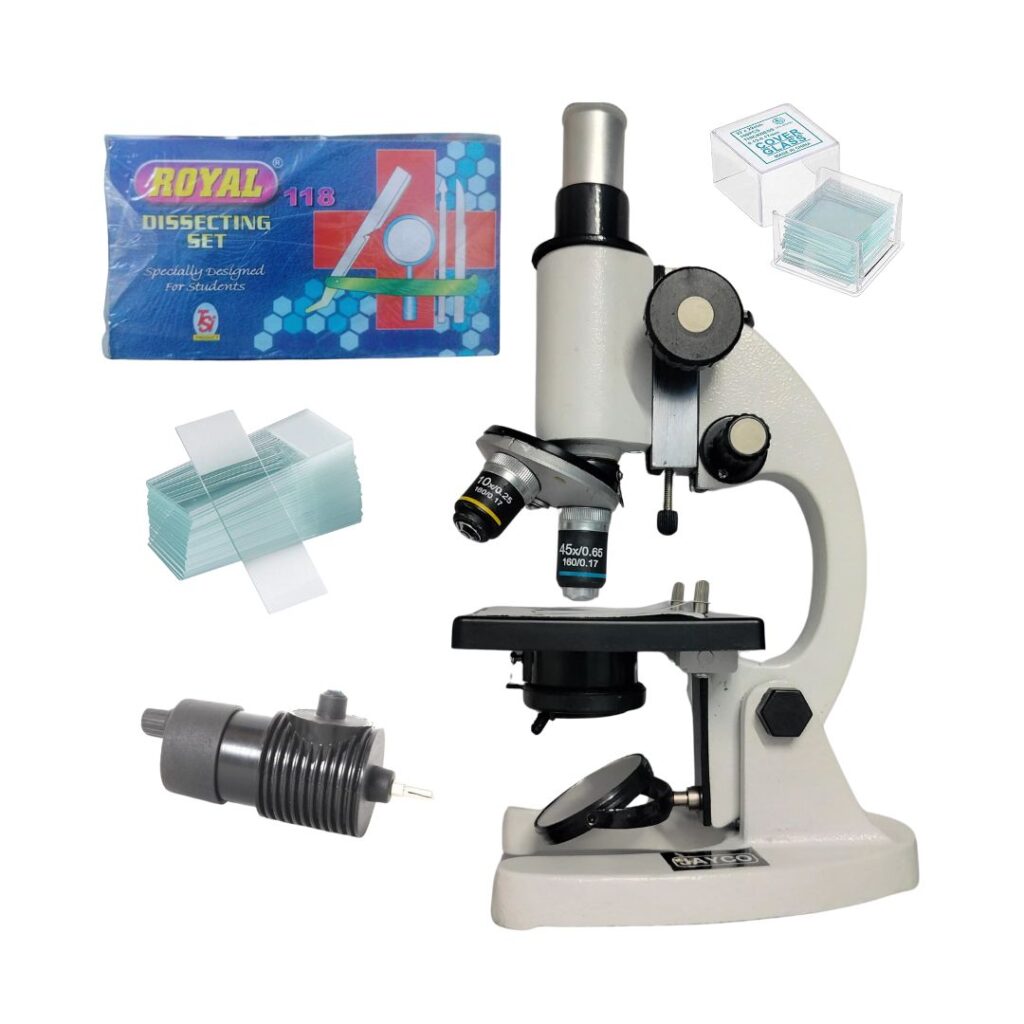-
-
 Cardiology
Cardiology
-
 Clinical Oncology
Clinical Oncology
-
 Dental
Dental
-
 Dermatology
Dermatology
-
 Ear, Nose, Throat (ENT)
Ear, Nose, Throat (ENT)
-
 Endocrinology
Endocrinology
-
 Gastroenterology
Gastroenterology
-
 General Surgery
General Surgery
-
 Gynecology & Obstetrics
Gynecology & Obstetrics
-
 Interventional Cardiology
Interventional Cardiology
-
 Nephrology
Nephrology
-
 Neurology
Neurology
-
 Oncology Surgery
Oncology Surgery
-
 Ophthalmology
Ophthalmology
-
 Orthopedics
Orthopedics
-
 Pediatrics
Pediatrics
-
 Pediatrics Surgery
Pediatrics Surgery
-
 Physiotherapy
Physiotherapy
-
 Plastic Surgery
Plastic Surgery
-
 Psychiatry & Psychology
Psychiatry & Psychology
-
 Radiology
Radiology
-
 Urology
Urology
-
 Vascular Surgery
Vascular Surgery
-
Equipping Schools with Science Equipment: Fostering Scientific Curiosity

Contents
- The Role of Science Equipment in Modern Education
- Why Hands-On Learning Is Essential for Scientific Understanding
- How Quality Science Equipment Enhances Classroom Engagement
- Bridging the Gap Between Theory and Practical Learning
- Impact of Well-Equipped Laboratories on Student Performance
- Encouraging Critical Thinking Through Scientific Experiments
- Types of Essential Science Equipment for Schools
- Importance of Age-Appropriate and Curriculum-Aligned Tools
- Safety Standards and Compliance in School Science Laboratories
- Casein Powder (Protein Rich) – 500gm
- CBSE Class 6 Science Apparatus
- CBSE Class 7 Science Apparatus
- CBSE Class 8 Science Apparatus
- Magnesium Ribbon
- Mercuric Chloride Solution 5% (125 ml)
- Nitric Acid CP Grade 2.5 Litres
- Petridish / Petri Plate – Sterile (Plastic / Individual pack / 90mm) (Pack of 600)
- Student Microscope
- Student Microscope with LED Lamp
- Student Microscope with LED Lamp & Dissection Kit
- Trichloro Acetic Acid-10% Solution (500 ml)
- How Science Equipment Supports STEM Education Initiatives
- Building Scientific Curiosity from Primary to Secondary Education
- Role of Teachers in Maximizing Equipment Utilization
- Budget-Friendly Solutions for Equipping School Laboratories
- Choosing Durable and Long-Lasting Science Equipment
- Integrating Digital and Traditional Science Tools in Classrooms
- Supporting Practical Assessments and Project-Based Learning
- Benefits of Well-Maintained Science Equipment for Schools
- Challenges Schools Face in Upgrading Science Laboratories
- Long-Term Educational Impact of Investing in Science Equipment
- How Science Equipment Prepares Students for Future Careers
- Conclusion
- Frequently Asked Questions About Science Equipment
Imagine a classroom buzzing with excitement, where students eagerly gather around tables filled with beakers, microscopes, and safety goggles. The air is charged with curiosity as they conduct experiments, observe reactions, and ask questions that spark their imaginations. This vibrant scene isn’t just about learning; it’s about nurturing a passion for science that can last a lifetime.
Equipping schools with quality science equipment plays a pivotal role in shaping young minds. It transforms abstract concepts into tangible experiences and fuels the desire to explore the world scientifically. As we delve deeper into this topic, we’ll uncover how essential tools not only enhance learning but also prepare students for future challenges—both academically and professionally. Join us on this journey to discover how fostering scientific curiosity through proper equipment can revolutionize education today!
The Role of Science Equipment in Modern Education
Science equipment serves as the backbone of modern education, bridging theory with real-world applications. In today’s classrooms, it transforms passive learning into an interactive experience. Students no longer just read about chemical reactions; they witness them firsthand.
With tools like microscopes and lab kits at their fingertips, learners engage deeply with scientific concepts. This hands-on approach cultivates a sense of ownership over their education. Experimentation encourages exploration and inquiry.
Moreover, quality science equipment fosters collaboration among peers. Group projects become opportunities for teamwork and communication skills to flourish. As students navigate experiments together, they learn the value of diverse perspectives in problem-solving.
Additionally, technology-enhanced instruments provide instant feedback that enhances understanding. These dynamic resources not only spark interest but also inspire future scientists and innovators who can address global challenges ahead.
Why Hands-On Learning Is Essential for Scientific Understanding
Hands-on learning transforms abstract concepts into tangible experiences. When students engage directly with scientific equipment, they grasp theories in a way textbooks cannot convey.
Experiments ignite curiosity and foster exploration. Students become active participants rather than passive recipients of information. This engagement leads to deeper comprehension and retention of knowledge.
Manipulating tools and materials allows learners to test hypotheses firsthand. They witness the cause-and-effect relationships that underpin scientific principles, which fosters critical thinking skills.
Moreover, hands-on activities encourage collaboration among peers. Working together on experiments builds teamwork while enhancing communication abilities—skills essential for future endeavors.
By connecting theory with practice, educators create a dynamic classroom environment that nurtures innovation and discovery. Each experiment becomes an opportunity for inquiry, sparking new questions that drive further investigation in science education.
How Quality Science Equipment Enhances Classroom Engagement
Quality science equipment transforms the learning experience in classrooms. When students have access to well-made tools, their curiosity is sparked immediately. They become more eager to explore scientific concepts firsthand.
Hands-on experiments encourage participation and collaboration among classmates. Students work together, sharing insights and discovering solutions as a team. This cooperative spirit fosters a deeper understanding of complex topics.
Moreover, engaging with reliable instruments allows learners to see real-world applications of what they study. Whether it’s conducting chemistry experiments or observing biological processes, quality equipment provides clarity and precision.
Teachers can also harness these resources for innovative lesson plans that captivate students’ attention. With modern apparatus at their disposal, educators can create interactive lessons that make science feel alive rather than abstract.
This dynamic environment encourages questions and discussions, transforming passive listeners into active participants in their education journey.
Bridging the Gap Between Theory and Practical Learning
The gap between theory and practical learning can often seem vast. Many students grapple with abstract concepts without seeing their real-world application. This disconnect can lead to frustration and disengagement.
Practical experiments breathe life into theoretical knowledge. When students conduct hands-on activities, they observe phenomena firsthand. This experience reinforces what they’ve learned in textbooks, making lessons more memorable.
Science equipment plays a pivotal role here. Microscopes, beakers, and lab kits transform classrooms into laboratories of discovery. They allow students to test hypotheses and explore outcomes actively.
Such experiences cultivate curiosity and enthusiasm for science. Students no longer view learning as a chore but as an adventure filled with questions waiting to be answered.
Bridging this gap not only enhances understanding but also fosters deeper critical thinking skills essential for future endeavors in any field.
Impact of Well-Equipped Laboratories on Student Performance
Well-equipped laboratories serve as a catalyst for student performance. When students have access to proper tools and materials, they engage more deeply with scientific concepts. This hands-on experience transforms abstract theories into tangible understanding.
Quality equipment allows learners to experiment freely. They can test hypotheses and observe results in real-time, fostering a sense of curiosity and discovery. This practical application reinforces their learning, making it memorable.
Moreover, well-maintained labs reduce frustration during experiments. Students spend less time troubleshooting faulty instruments and more time focused on the science at hand.
The environment itself plays a role too; modern facilities inspire confidence and motivation among students. A well-designed lab encourages collaboration and teamwork, essential skills in any field.
When resources align with educational goals, students thrive academically while developing critical thinking skills necessary for future challenges.
Encouraging Critical Thinking Through Scientific Experiments
Scientific experiments ignite curiosity and push students to think critically. Each experiment invites them to ask questions, analyze results, and form hypotheses.
When students engage in hands-on activities, they become active participants in their learning journey. They learn not just to follow instructions but also to adapt methods based on observations. This flexibility enhances problem-solving skills.
Encouraging experimentation fosters a mindset where failure is seen as a stepping stone rather than an endpoint. Students learn resilience while refining their ideas through trial and error.
Moreover, discussions about experimental outcomes spark deeper conversations among peers. This collaborative environment nurtures diverse perspectives and encourages thoughtful analysis of data.
Incorporating critical thinking into scientific exploration prepares students for real-world challenges. They gain confidence in making decisions backed by evidence and reasoned thought processes beyond the classroom setting.
Types of Essential Science Equipment for Schools
Classrooms thrive on variety. Essential science equipment includes microscopes, which unveil the microscopic world, and beakers that facilitate chemical reactions. These tools spark imagination.
Bunsen burners ignite curiosity in chemistry labs. They enable students to experiment with heat and combustion safely.
For physics lessons, consider using dynamics carts or pulleys to demonstrate fundamental concepts like motion and forces. Hands-on experience enhances comprehension.
In biology classes, dissection kits help students explore anatomy directly. Such activities deepen their understanding of living organisms.
Don’t overlook measuring instruments like rulers and thermometers; they lend precision to experiments across all scientific disciplines.
Digital tools such as data loggers can collect real-time information during experiments. This modern approach integrates technology with traditional learning methods effectively.
Importance of Age-Appropriate and Curriculum-Aligned Tools
Age-appropriate and curriculum-aligned tools are crucial for effective science education. They ensure that students engage with material that matches their developmental stage and learning objectives.
Younger learners benefit from hands-on activities using simple equipment, sparking interest without overwhelming them. For instance, basic magnifying glasses can introduce the wonders of biology in a relatable way.
As students progress to higher grades, more complex instruments like microscopes or spectrophotometers become essential. These tools support deeper understanding and prepare them for advanced concepts in high school and beyond.
Curriculum alignment guarantees that each piece of equipment complements what’s being taught in class. This relevance keeps lessons focused and meaningful, allowing students to connect theory with real-world applications effectively.
Using the right tools at the right time fosters confidence and curiosity, nurturing future scientists who are ready to explore the world around them.
Safety Standards and Compliance in School Science Laboratories
Safety standards in school science laboratories are paramount. These guidelines ensure a secure environment for students and educators alike. Proper training is essential, enabling teachers to instruct students on safe practices.
Laboratories should feature essential safety equipment, such as eyewash stations and fire extinguishers. Regular inspections help maintain compliance with local regulations. This proactive approach minimizes risks associated with hazardous materials and experiments.
Moreover, clear labeling of chemicals and proper storage solutions contribute to overall safety. Students must understand the significance of wearing personal protective equipment (PPE), like gloves and goggles.
Creating a culture of safety strengthens awareness among young scientists. Engaging discussions about potential hazards prepare them for real-world scenarios beyond the classroom setting. A commitment to safety fosters responsibility and respect for scientific inquiry in future careers.
How Science Equipment Supports STEM Education Initiatives
Science equipment plays a pivotal role in supporting STEM education initiatives. By providing hands-on tools, students can explore complex scientific concepts in an engaging way.
When learners interact with microscopes, beakers, and other instruments, they develop a deeper understanding of the material. These experiences foster critical thinking skills essential for future careers in science, technology, engineering, and mathematics.
Moreover, integrating quality equipment into lessons encourages collaboration among students. Group experiments promote teamwork and communication — key components of successful STEM fields.
With access to modern laboratories filled with appropriate science gear, schools empower students to innovate and solve real-world problems. This approach not only enriches their learning but also inspires creativity that extends beyond the classroom walls.
Equipping schools with quality science tools sets the foundation for vibrant STEM programs that prepare young minds for tomorrow’s challenges.
Building Scientific Curiosity from Primary to Secondary Education
Fostering scientific curiosity starts early. In primary education, children are naturally inquisitive. They ask questions about the world around them and explore through play. This enthusiasm can be harnessed with age-appropriate science equipment that captivates their interest.
As they transition to secondary education, students dive deeper into concepts like chemistry and physics. Here, hands-on experiments become crucial. Engaging activities spark wonder and ignite a desire to learn more.
Teachers play a vital role in this journey. Their passion for science can inspire students to pursue inquiries beyond the classroom walls. When learners see real-world applications of their studies, it deepens their understanding and fuels further exploration.
Creating an environment rich in resources encourages constant questioning and experimentation. Science isn’t just a subject; it’s a way of thinking that should be nurtured from the very beginning through engaging tools and experiences tailored to different developmental stages.
Role of Teachers in Maximizing Equipment Utilization
Teachers play a crucial role in maximizing the use of science equipment in classrooms. Their expertise and enthusiasm can transform traditional lessons into dynamic learning experiences.
Effective training is essential. When teachers are well-acquainted with the tools at their disposal, they can integrate them seamlessly into their lesson plans. This familiarity breeds confidence among students, encouraging them to experiment and explore.
Moreover, teachers can foster a culture of inquiry by designing engaging experiments that utilize available resources. They inspire curiosity when they demonstrate how scientific concepts apply to real-world scenarios.
Collaboration among educators also enhances utilization. Sharing best practices or innovative teaching strategies helps create a richer educational environment where science flourishes.
Encouraging student involvement further amplifies this impact. Teachers who empower learners to take ownership of their experiments cultivate independent thinkers ready to tackle complex challenges ahead.
Budget-Friendly Solutions for Equipping School Laboratories
Equipping school laboratories doesn’t have to drain the budget. Schools can explore a variety of cost-effective solutions that maintain quality while ensuring accessibility.
One effective approach is sourcing equipment from reputable suppliers offering discounts for educational institutions. Bulk purchasing or joining cooperative buying groups can also yield significant savings.
Consider using refurbished or second-hand tools. Many schools upgrade their labs and sell older equipment at a fraction of the original price, allowing others to benefit without overspending.
DIY experiments often require minimal supplies, many of which are common household items. This not only saves money but also encourages creativity in scientific exploration.
Involving students in fundraising initiatives can further bolster lab resources. Engaging them promotes ownership and investment in their learning environment, making science more relatable and exciting.
Choosing Durable and Long-Lasting Science Equipment
When it comes to equipping school laboratories, durability should be a top priority. Science equipment endures constant use and the wear-and-tear that comes with enthusiastic experiments. Choosing materials that can withstand this is essential for maintaining functionality over time.
Look for items made from high-quality, resilient materials. Stainless steel or polycarbonate are excellent choices because they resist corrosion and breakage. Investing in such equipment minimizes replacement costs down the line.
Also, think about warranties and manufacturer reputations. A reliable company often offers extensive guarantees on their products, signaling confidence in their longevity.
Consider how equipment is stored and maintained within your labs. Proper care extends the lifespan of even the best tools. By making thoughtful choices now, schools can ensure students have access to dependable resources throughout their educational journey.
Integrating Digital and Traditional Science Tools in Classrooms
Blending digital and traditional science tools can create a dynamic classroom experience. Digital platforms, like simulations and interactive apps, offer students a way to visualize complex concepts. They provide instant feedback, allowing learners to grasp scientific principles quickly.
On the other hand, hands-on experiments with traditional equipment foster tactile learning. Students engage directly with materials, enhancing their understanding through experimentation. The contrast between these methods encourages diverse thinking styles.
Using both approaches allows teachers to cater to various learning preferences. Some students thrive on visual aids while others excel in practical applications.
Integrating technology also prepares students for modern careers where digital proficiency is essential. By fostering collaboration between digital and physical resources, educators can cultivate well-rounded scientists ready for future challenges.
Combining these tools enriches the educational landscape, making science more accessible and enjoyable for everyone involved.
Supporting Practical Assessments and Project-Based Learning
Practical assessments and project-based learning are cornerstones of effective science education. They provide students with opportunities to apply theoretical knowledge in real-world contexts. This hands-on approach fosters deeper understanding and retention.
Quality science equipment plays a crucial role here. When students can experiment, observe, and manipulate materials directly, their engagement skyrockets. It transforms abstract concepts into tangible experiences.
Projects that incorporate scientific tools encourage collaboration among peers. Students learn to communicate ideas and solve problems together, skills essential for any future career path.
Moreover, practical assessments allow educators to gauge a student’s comprehension beyond traditional testing methods. They reveal critical thinking abilities and creativity in problem-solving situations.
By integrating high-quality equipment into these learning experiences, schools enhance the educational journey significantly while inspiring the next generation of innovators and thinkers.
Benefits of Well-Maintained Science Equipment for Schools
Well-maintained science equipment is essential for creating a productive learning environment. It not only ensures safety but also boosts the confidence of students during experiments.
When tools and instruments function optimally, students can focus on exploration and discovery rather than troubleshooting faulty gear. This seamless experience fosters an atmosphere where curiosity thrives.
Reliable equipment enhances the quality of lessons. Teachers can demonstrate complex concepts more effectively when they have access to functional apparatus, making difficult topics easier to grasp.
Moreover, consistent upkeep reduces long-term costs. Schools save resources by avoiding frequent replacements of damaged items while ensuring that every student has access to high-quality materials.
Well-cared-for science tools inspire respect for scientific practice among students. They learn the importance of precision and care in experimentation, which are vital skills in both academic pursuits and future careers.
Challenges Schools Face in Upgrading Science Laboratories
Upgrading science laboratories presents a unique set of challenges for schools. Limited budgets often restrict the ability to purchase modern equipment. Financial constraints can hinder even the most well-intentioned plans.
Another significant hurdle is the lack of space. Many existing labs are outdated and not designed for new technologies, making renovations complicated. Schools may struggle to find adequate room for both traditional and digital tools.
Staff training also plays a critical role in these upgrades. Teachers need proper instruction on how to use advanced equipment effectively, which requires time and resources that may not be readily available.
Additionally, compliance with safety standards complicates matters further. Each new piece of equipment must meet stringent regulations, leading to delays in implementation as schools navigate bureaucratic requirements.
Keeping up with rapidly changing technology can overwhelm administrators seeking to provide students with relevant learning experiences while remaining current in an evolving scientific landscape.
Long-Term Educational Impact of Investing in Science Equipment
Investing in science equipment shapes the educational landscape for years to come. It cultivates a generation of critical thinkers and innovators. When students engage with hands-on tools, they develop practical skills that transcend traditional learning.
Quality equipment fosters an environment where curiosity thrives. This exposure enables learners to explore complex concepts and apply their knowledge effectively. The confidence gained from successful experiments can ignite a passion for scientific inquiry.
Long-term benefits extend beyond individual classrooms. Schools equipped with modern science tools often see improved academic performance across subjects. Enhanced engagement leads to higher retention rates and better understanding of scientific principles.
Moreover, as students become proficient in using advanced technology, they are better prepared for future careers in STEM fields. This readiness contributes not only to personal growth but also to societal advancements, creating informed citizens ready to tackle tomorrow’s challenges.
How Science Equipment Prepares Students for Future Careers
Hands-on experience with science equipment cultivates essential skills that prepare students for various future careers. As they engage with tools and experiments, learners develop critical thinking and problem-solving abilities. These are highly sought-after qualities in today’s job market.
When students conduct experiments, they learn the importance of precision and attention to detail. Such traits are invaluable across numerous professions, from engineering to healthcare.
Additionally, familiarity with modern scientific instruments fosters adaptability. This ability to navigate new technologies is crucial as industries continue evolving rapidly.
Collaborative projects involving science equipment teach teamwork and communication skills. Students often work in groups during lab sessions, mirroring real-world scenarios where collaboration drives innovation.
Exposure to practical applications of science ignites passion for STEM fields. This enthusiasm can lead them toward fulfilling careers in research, technology development, environmental conservation, or medicine—fields that shape our world’s future.
Conclusion
Equipping schools with the right science tools is vital for fostering a culture of inquiry. When students interact directly with scientific concepts, their understanding deepens.
Access to quality equipment can ignite passion and curiosity in young minds. The right resources allow for exploration and experimentation, which are crucial for developing critical thinking skills.
Teachers play an essential role in guiding these experiences. Their creativity and enthusiasm can turn basic lessons into captivating investigations that stick with students long after they leave the classroom.
Investing in modern science labs sets the foundation for future innovation. Students who engage meaningfully with science today will become tomorrow’s leaders in various fields, driving progress forward.
Equipping our educational institutions isn’t just about materials; it’s about nurturing the next generation of thinkers and problem-solvers.
Frequently Asked Questions About Science Equipment
Equipping schools with the right science equipment creates a vibrant learning environment that sparks curiosity and fosters discovery. As students engage in hands-on experiments, they build essential skills that prepare them for future challenges. Quality tools not only enhance understanding but also make lessons more enjoyable.
Here are some frequently asked questions about science equipment:
What types of science equipment should every school have?
Essential items include microscopes, beakers, Bunsen burners, measuring instruments, and safety gear.
How can schools acquire funding for new science equipment?
Schools may explore grants from educational foundations, partnerships with local businesses or community fundraising events to secure financing.
Why is it important to follow safety standards in school laboratories?
Safety standards ensure a secure learning environment by minimizing risks and protecting both students and teachers during experiments.
Can digital tools replace traditional lab equipment?
While digital tools provide unique advantages like simulations and data analysis software, they should complement rather than completely replace traditional lab experiences.
How often should science equipment be maintained or replaced?
Regular maintenance checks are crucial to keep facilities safe and functional; typically, major upgrades occur every five to ten years depending on usage levels.


 Anatomy Lab Equipments
Anatomy Lab Equipments
 Biochemistry Lab Equipments
Biochemistry Lab Equipments
 Biology Lab Equipments
Biology Lab Equipments
 Chemistry Lab Equipments
Chemistry Lab Equipments
 Cytology Lab Equipments
Cytology Lab Equipments
 Cytopathology Lab Equipments
Cytopathology Lab Equipments
 Dental Lab Equipments
Dental Lab Equipments
 Forensic Lab Equipments
Forensic Lab Equipments
 Genetics Lab Equipments
Genetics Lab Equipments
 Hematology Lab Equipments
Hematology Lab Equipments
 Histology Lab Equipments
Histology Lab Equipments
 Histopathology Lab Equipments
Histopathology Lab Equipments
 Mathematics Lab Equipments
Mathematics Lab Equipments
 Microbiology Lab Equipments
Microbiology Lab Equipments
 Molecular Biology Lab Equipments
Molecular Biology Lab Equipments
 Pathology Lab Equipments
Pathology Lab Equipments
 Pharmaceutical Lab Equipments
Pharmaceutical Lab Equipments
 Physics Lab Equipments
Physics Lab Equipments
 Radiology Lab Equipments
Radiology Lab Equipments
 Science Lab Kit’s
Science Lab Kit’s
 Toxicology Lab Equipments
Toxicology Lab Equipments

 Borosilicate Glass Beaker
Borosilicate Glass Beaker
 Plastic Beaker (Euro Design)
Plastic Beaker (Euro Design)
 Plastic Beaker (Printed Graduation)
Plastic Beaker (Printed Graduation)
 Test Tube Brush
Test Tube Brush
 Measuring Cylinder Brush
Measuring Cylinder Brush
 Conical Flask Brush
Conical Flask Brush
 Volumetric Flask Brush
Volumetric Flask Brush
 Round Bottom Flask Brush
Round Bottom Flask Brush
 Glass Beaker Brush
Glass Beaker Brush
 Pipette Brush
Pipette Brush
 Wash Bottle Brush
Wash Bottle Brush
 Borosilicate Büchner Flask
Borosilicate Büchner Flask
 Borosilicate Erlenmeyer/Conical Flask
Borosilicate Erlenmeyer/Conical Flask
 Borosilicate Pear-Shaped Flask
Borosilicate Pear-Shaped Flask
 Borosilicate Round Bottom Flask
Borosilicate Round Bottom Flask
 Plastic Conical Flask
Plastic Conical Flask
 Plastic Volumetric Flask
Plastic Volumetric Flask
 Bunsen Burner
Bunsen Burner
 Spirit Lamp
Spirit Lamp
 Borosilicate Glass Burette
Borosilicate Glass Burette
 Plastic Burette
Plastic Burette
 Capillary Tube
Capillary Tube
 Centrifuge Tube
Centrifuge Tube
 Test Tube
Test Tube
 Ria Vial
Ria Vial
 Vacutainer Tubes
Vacutainer Tubes
 Syringes
Syringes
 Student Microscope
Student Microscope
 Binocular Microscope
Binocular Microscope
 Dissecting Microscope
Dissecting Microscope
 Microscope Glass Slides
Microscope Glass Slides
 Cover Slip
Cover Slip
 Inoculating Loop
Inoculating Loop
 Slide Box
Slide Box
 Lamps
Lamps
 Oils
Oils
 Beaker Tongs
Beaker Tongs
 Crucible Tongs
Crucible Tongs
 Flask Tongs
Flask Tongs
 Borosilicate Glass Funnel
Borosilicate Glass Funnel
 Plastic Funnels
Plastic Funnels
 Wash Bottle
Wash Bottle
 Borosilicate Glass Reagent Bottle
Borosilicate Glass Reagent Bottle
 Plastic Reagent Bottle
Plastic Reagent Bottle
 Borosilicate Measuring Cylinder
Borosilicate Measuring Cylinder
 Plastic Measuring Cylinder
Plastic Measuring Cylinder
 Borosilicate Glass Graduated Pipette
Borosilicate Glass Graduated Pipette
 Borosilicate Glass Volumetric Pipette
Borosilicate Glass Volumetric Pipette
 HB Pipette
HB Pipette
 Pasteur Pipette
Pasteur Pipette
 Micropipettes
Micropipettes
 Micropipette Tips
Micropipette Tips
 Filter Paper
Filter Paper
 Litmus Paper
Litmus Paper
 pH Paper
pH Paper
 Chromatography Paper
Chromatography Paper
 Plastic Petri Plates (Sterile)
Plastic Petri Plates (Sterile)
 Glass Petri Plates (Non-Sterile)
Glass Petri Plates (Non-Sterile)
 Safety Goggles
Safety Goggles
 Lab Coats
Lab Coats
 Gloves
Gloves
 Masks
Masks
 Shoe Covers
Shoe Covers
 Hair & Beard Covers
Hair & Beard Covers
 Steel Spatula
Steel Spatula
 Plastic Spatula
Plastic Spatula
 Hitachi Sample Cup
Hitachi Sample Cup
 Plastic Scoop
Plastic Scoop
 Plastic Medicine Cup
Plastic Medicine Cup
 Dissecting Tool Kit
Dissecting Tool Kit
 Dissecting Forceps
Dissecting Forceps
 Hemostatic Forceps
Hemostatic Forceps
 Thumb Forceps / Tweezers
Thumb Forceps / Tweezers
 Blood Culture Bottle
Blood Culture Bottle
 Urine Container
Urine Container
 Wooden Swab Stick
Wooden Swab Stick
 Test Tube Holder
Test Tube Holder
 Test Tube Racks
Test Tube Racks
 Magnifying Glass
Magnifying Glass
 Watch Glass
Watch Glass
 Mortar and Pestle
Mortar and Pestle
 Coplin Jar
Coplin Jar
 Plastic Stirrer
Plastic Stirrer
 Glass Stirrer
Glass Stirrer
 Crucible
Crucible
 Tripod
Tripod
 Wire Mesh
Wire Mesh
 Laboratory Thermometer
Laboratory Thermometer
 Tourniquet
Tourniquet
 Alcohol Swab
Alcohol Swab
 Blood Lancet
Blood Lancet
 Bandage
Bandage
 Gloves & Masks
Gloves & Masks


















 Cardiology
Cardiology Clinical Oncology
Clinical Oncology






